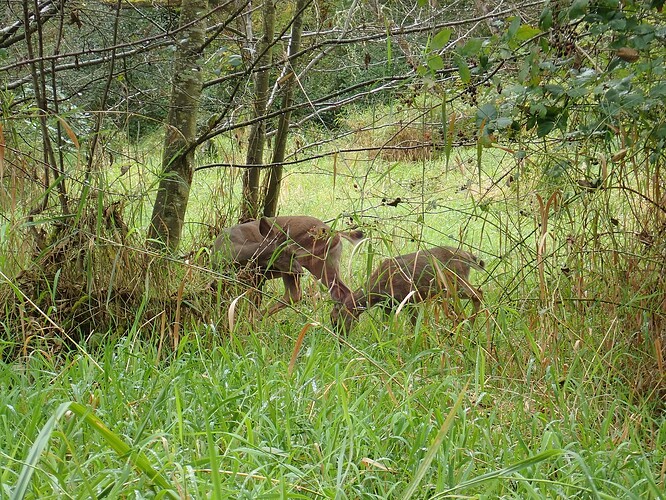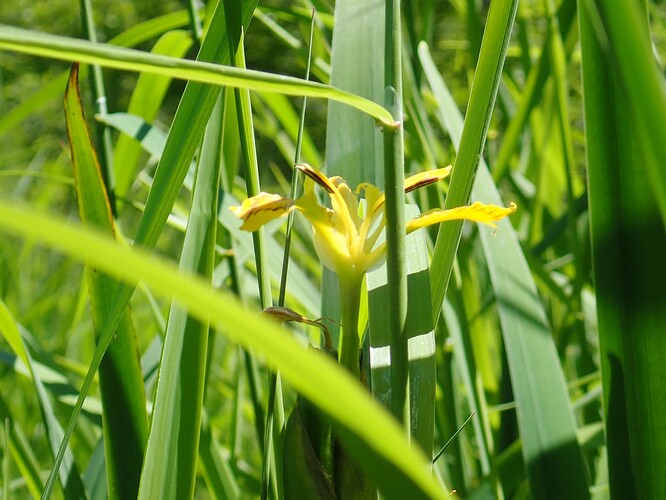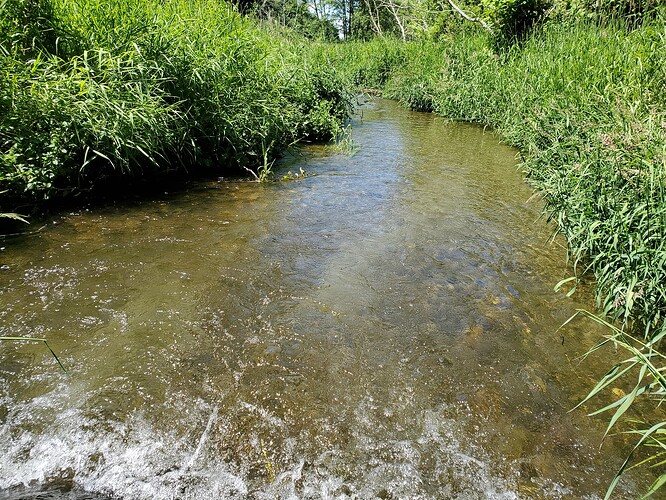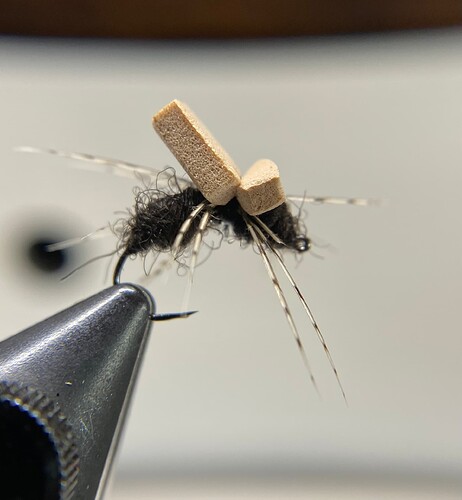Tristan picked a pattern from his “junk drawer” with a “do it all” profile representing caddis, stones, hoppers, moths… that fish see a lot of. When there is no visible “hatch” telling me otherwise, it’s the first fly out of my box on small streams like that with a 7’ cane or “traditional action” glass or graphite rod & reel.
There is a small stream 20 minutes from home loaded with native Coastal Cutthroat Trout. It’s the drainage from a large lake at 300’ dropping 160’ of elevation through 1.5 miles of suburbs where two other creeks join it, then into a steep 300’ ravine in a county park where it flows into a saltwater lagoon at just under 4 miles.
The creek in the park has 3 distinct “canyon”, “forest”, and “meadow” sections. The upper portion of the “meadow” section has a lot of downed trees pushed together into logjams that have filled in with silt washed down from above between the logs. It has vertical 3’-4’ undercut banks under the logs where the volume of water from the 3 creeks has created a main channel and sections of side channels.
The “meadow” on top of the log and silt base is very fertile with chest-high grass.
This photo was taken at eye level while standing in the creek.
Other typical spots
Some sections narrow to where I could take a running jump across but a foot might be plunged into a hole between the logs and I’d wind up with a compound fracture. The water runs very vast through those narrow sections and I haven’t found an effective way to fish to fish them. I frequently catch fish to 13" in the slower sections but I have met and spoken at length with the Director of the Costal Cutthroat Coalition that works with the State Dept of Fish & Wildlife to study and improve regional conditions for native fluvial Coastal Cutthroat and their anadromous Sea Run Cutthroat siblings. He lives near the creek and says very large fluvial and anadromous fish can be found hanging out under those banks just out of the fast water.
I fish it frequently with a friend who uses an 8’ - 9’ western rod & reel with dry flies. Because Coastal Cutthroat are naturally aggressive and attracted to the colors red and orange, his goto is a Royal Coachman. I consistently catch a greater number of fish using a Pheasant Tail Sakasa Kebari wet fly because I miss fewer strikes in the fast water with a long rod and tight line.
However when the season opens this year I am going to try something different in the fast sections. I think someone (fairly new) on the forum recently mentioned laying down in the grass to use it for cover on the bank above the water. That got me thinking about trying that in some of those narrow sections where I have hooked fish but been unable to land them in the swift current. I want to try slowly approaching, quietly waiting, preparing my position by creating a window through the grass, readying my rod and my long-handled Dt damo, then stretching out my rod to use a B&A cast for dapping a fly next to the bank to see if I have any results. It seems like a Mizuchi, a short line, and a dry fly might be a combination to try. I might even try using the floatant I keep buried deep in my pack.
*Plus drifting a streamer into an undercut bank above a bend.





